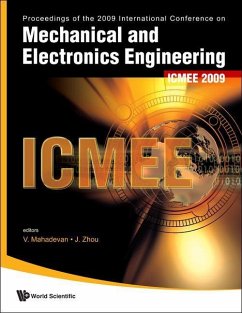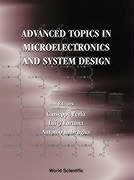
Fabrication Techniques for III-V Micro-Opto-Electro-Mechanical Systems
Versandkostenfrei!
Versandfertig in über 4 Wochen
18,99 €
inkl. MwSt.
Weitere Ausgaben:

PAYBACK Punkte
9 °P sammeln!
This thesis studies techniques for selective removal of semiconductor material in AlxGa1-xAs systems for the purpose of fabricating Micro-Opto-Electro-Mechanical Systems (MOEMS). Fabrication in AlxGa1-xAs allows for the emission, control, and detection of light from the near-infrared to the visible region of the spectrum. Specifically, MOEMS will enable wavelength division multiplexing (WDM) in the next generations of communications equipment, which will multiply the amount of information that can be sent through existing optical fiber cabling. This work was accomplished by performing an etch ...
This thesis studies techniques for selective removal of semiconductor material in AlxGa1-xAs systems for the purpose of fabricating Micro-Opto-Electro-Mechanical Systems (MOEMS). Fabrication in AlxGa1-xAs allows for the emission, control, and detection of light from the near-infrared to the visible region of the spectrum. Specifically, MOEMS will enable wavelength division multiplexing (WDM) in the next generations of communications equipment, which will multiply the amount of information that can be sent through existing optical fiber cabling. This work was accomplished by performing an etch study on the selective removal of GaAs from an AlxGa1-xAs structure. The technique of oxidizing AlAs or Al0:98Ga0:02As and removing the oxide was also investigated along with methods for the direct removal of AlAs. The knowledge gained during these etch studies was then applied to the fabrication of Micro-Electro-Mechanical tunable Fabry-Perot filters as well as lift-of microcavity light emitting devices. The etchants and materials studied showed high selectivity for removal of both GaAs and AlAs. Mechanical structures were fabricated and actuated using these techniques and resonant cavity light emitting diodes were transplanted from their native substrate to another substrate singly and in arrays. This thesis presents three methods for fabricating MEM systems in III-V materials. This fabrication knowledge will be applied to the fabrication of devices such as tunable vertical cavity surface emitting lasers (VCSELs). Transplantable optical devices have broad applications in the areas of computing and communications. This work can also be used as a basis for fabrication of Nano-Electro-Mechanical Systems using crystalline III-V materials. This work has been selected by scholars as being culturally important, and is part of the knowledge base of civilization as we know it. This work was reproduced from the original artifact, and remains as true to the original work as possible. Therefore, you will see the original copyright references, library stamps (as most of these works have been housed in our most important libraries around the world), and other notations in the work. This work is in the public domain in the United States of America, and possibly other nations. Within the United States, you may freely copy and distribute this work, as no entity (individual or corporate) has a copyright on the body of the work. As a reproduction of a historical artifact, this work may contain missing or blurred pages, poor pictures, errant marks, etc. Scholars believe, and we concur, that this work is important enough to be preserved, reproduced, and made generally available to the public. We appreciate your support of the preservation process, and thank you for being an important part of keeping this knowledge alive and relevant.












